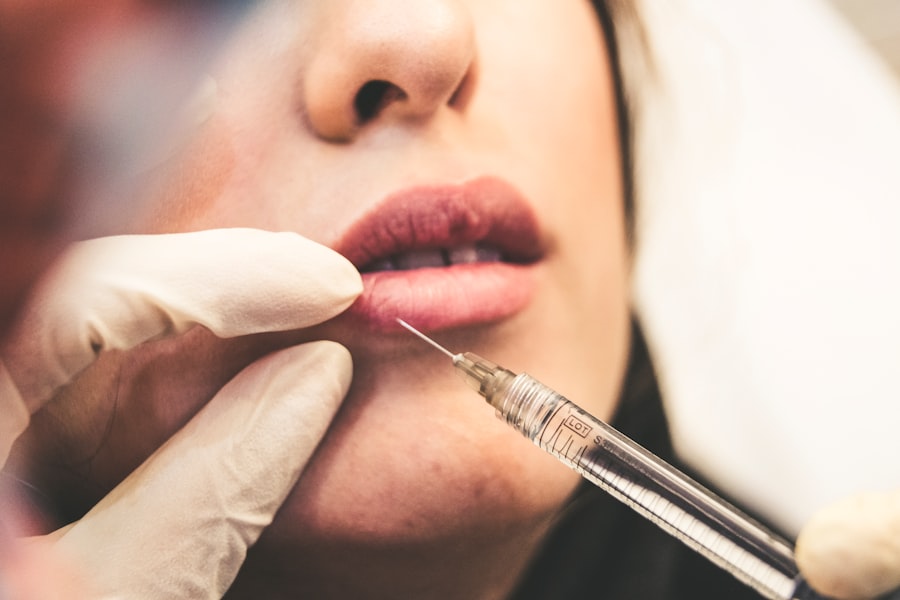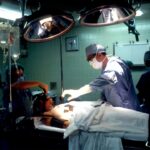Scars are a natural part of the body’s healing process, forming when the skin undergoes injury or trauma. When you experience a cut, burn, or surgical incision, your body works diligently to repair the damaged tissue.
However, the new tissue that forms is often different in texture and appearance from the surrounding skin, resulting in a scar. Understanding the various causes of scars can help you appreciate the complexity of skin healing and the reasons behind different scar types. There are numerous factors that contribute to the formation of scars.
For instance, the severity of the injury plays a significant role; deeper wounds typically result in more pronounced scarring. Additionally, your skin type and color can influence how scars develop. Some individuals may be more prone to keloid or hypertrophic scars, which are raised and can be itchy or painful.
Other factors include age, genetics, and even the location of the injury on your body. By recognizing these elements, you can better understand your own scars and consider options for treatment if desired.
Key Takeaways
- Scars are the body’s natural response to injury or trauma, and can be caused by accidents, surgery, acne, or burns.
- Laser scar removal can improve the appearance of scars by reducing their size, color, and texture, and can also help with itching and discomfort.
- Laser scar removal works by targeting the scar tissue with high-energy light, stimulating the production of new, healthy skin cells.
- Different types of scars, including keloid, hypertrophic, and atrophic scars, can be effectively treated with laser scar removal.
- Patients can expect some redness and swelling immediately after treatment, but can resume normal activities shortly after, with minimal downtime. It’s important to choose a qualified professional for laser scar removal to ensure safe and effective treatment.
- Potential risks and side effects of laser scar removal may include temporary discomfort, redness, or changes in skin pigmentation, but these are usually mild and temporary.
- Aftercare and maintenance for scar-free skin may include protecting the treated area from sun exposure, keeping the skin moisturized, and following the provider’s post-treatment instructions.
The Benefits of Laser Scar Removal
Targeted Treatment for Effective Results
One of the most notable advantages of laser scar removal is its ability to target specific areas without affecting the surrounding skin. This precision allows for effective treatment of various scar types, including those that are raised or discolored.
Improved Skin Appearance and Minimal Downtime
As a result, you may find that your scars become less noticeable over time, leading to a more even skin tone and texture. Another key benefit of laser scar removal is its minimal downtime compared to traditional surgical methods. Many people appreciate that they can return to their daily activities relatively quickly after treatment.
A Comfortable and Convenient Procedure
The procedure is often performed on an outpatient basis, meaning you won’t need to stay in a hospital overnight. Additionally, advancements in laser technology have made treatments more comfortable and effective than ever before, allowing for a smoother experience overall. With these benefits in mind, it’s no wonder that many individuals are turning to laser therapy as a viable option for scar reduction.
How Laser Scar Removal Works

Laser scar removal works by utilizing focused light energy to target and break down scar tissue. When you undergo this treatment, the laser penetrates the skin’s surface and stimulates collagen production in the underlying layers. This process encourages your body to naturally heal itself, gradually reducing the appearance of scars over time.
Depending on the type of laser used, the treatment can also help to improve skin texture and tone, making it an effective solution for various scar types. The procedure typically begins with a consultation where your practitioner assesses your scars and discusses your goals. During the treatment itself, you may feel a sensation similar to a rubber band snapping against your skin, but many modern lasers come equipped with cooling mechanisms to enhance comfort.
Sessions usually last anywhere from 30 minutes to an hour, depending on the size and number of scars being treated. Afterward, you may notice some redness or swelling, but these effects are generally temporary and subside within a few days.
The Different Types of Scars that Can be Treated
| Types of Scars | Description | Treatment Options |
|---|---|---|
| Acne Scars | Result from severe acne and can be pitted or raised | Laser therapy, chemical peels, microneedling |
| Hypertrophic Scars | Raised, red scars that do not extend beyond the original wound | Steroid injections, silicone gel sheets, cryotherapy |
| Atrophic Scars | Indented scars that result from loss of tissue | Dermal fillers, laser resurfacing, microneedling |
| Keloid Scars | Thick, raised scars that extend beyond the original wound | Steroid injections, silicone gel sheets, cryotherapy |
Not all scars are created equal; they come in various forms, each requiring different approaches for effective treatment. One common type is atrophic scars, which are characterized by a loss of tissue and appear as depressions in the skin. These scars often result from acne or chickenpox and can be particularly frustrating for those who experience them.
Laser treatments can effectively stimulate collagen production in these areas, helping to fill in the depressions over time. Hypertrophic scars and keloids are other types that can be treated with laser therapy. Hypertrophic scars are raised but remain within the boundaries of the original wound, while keloids extend beyond those boundaries and can be larger than the initial injury.
Both types can be challenging to manage, but laser treatments can help flatten and soften these scars, making them less prominent. By understanding the different types of scars that can be treated with laser therapy, you can make informed decisions about your treatment options.
What to Expect During and After Laser Scar Removal
When you decide to undergo laser scar removal, it’s essential to know what to expect both during and after the procedure. During your appointment, your practitioner will likely apply a topical anesthetic to minimize discomfort. You may feel some warmth or slight pressure as the laser is applied to your skin.
The duration of the treatment will depend on the size and number of scars being addressed but typically lasts between 30 minutes to an hour.
These effects usually subside within a few days, but it’s crucial to follow your practitioner’s aftercare instructions closely.
You may be advised to avoid sun exposure and refrain from using certain skincare products for a period of time to ensure optimal healing. As your skin recovers, you should begin to notice improvements in the appearance of your scars over several weeks or months.
The Importance of Choosing a Qualified Professional

Selecting a qualified professional for your laser scar removal is paramount to achieving safe and effective results. Not all practitioners have the same level of training or experience with laser treatments, so it’s essential to do your research before making a decision. Look for someone who specializes in dermatology or cosmetic procedures and has a proven track record of successful outcomes with laser therapy.
During your initial consultation, don’t hesitate to ask questions about their qualifications, experience with similar cases, and the specific technology they use. A reputable practitioner will be transparent about their methods and will take the time to understand your unique needs and concerns. By choosing a qualified professional, you can feel more confident in your treatment plan and increase your chances of achieving satisfactory results.
Potential Risks and Side Effects of Laser Scar Removal
While laser scar removal is generally considered safe, it’s essential to be aware of potential risks and side effects associated with the procedure. Some individuals may experience temporary redness, swelling, or discomfort following treatment; these effects typically resolve within a few days. However, there is also a risk of more severe side effects such as changes in pigmentation or scarring if not performed correctly.
To minimize these risks, it’s crucial to follow all pre- and post-treatment instructions provided by your practitioner. This may include avoiding sun exposure or certain medications that could affect healing. Additionally, discussing any concerns or medical conditions with your provider beforehand can help ensure that you are an appropriate candidate for laser therapy.
Aftercare and Maintenance for Scar-Free Skin
Aftercare plays a vital role in achieving optimal results from laser scar removal. Following your treatment, it’s essential to keep the treated area clean and moisturized as it heals. Your practitioner may recommend specific products or routines tailored to your skin type to promote healing and minimize irritation.
In addition to immediate aftercare, ongoing maintenance is crucial for maintaining scar-free skin in the long term. This may involve regular follow-up appointments with your practitioner to assess progress and determine if additional treatments are necessary. Furthermore, adopting a healthy skincare routine that includes sun protection can help prevent new scars from forming while preserving the results of your laser treatment.
In conclusion, understanding scars and their causes is essential for anyone considering laser scar removal as a treatment option. With numerous benefits such as precision targeting and minimal downtime, this innovative approach has become increasingly popular among those seeking smoother skin. By familiarizing yourself with how laser therapy works, the types of scars it can treat, what to expect during recovery, and the importance of choosing a qualified professional, you can make informed decisions about your skincare journey.
Remember that proper aftercare is vital for achieving lasting results; with dedication and care, you can enjoy improved skin texture and confidence in your appearance.
If you are considering laser scar removal, you may also be interested in learning about the benefits of laser hair removal. According to a recent article on inlaserhairremoval.com, laser hair removal can provide long-lasting results and smooth skin. By targeting the hair follicles with laser energy, this treatment can effectively reduce unwanted hair growth. This article discusses the process of laser hair removal and its potential advantages for those looking to achieve silky, hair-free skin.
FAQs
What is laser scar removal?
Laser scar removal is a non-invasive procedure that uses focused light therapy to reduce the appearance of scars on the skin. The laser targets the damaged skin cells and stimulates the production of new, healthy skin cells to improve the overall texture and tone of the skin.
How does laser scar removal work?
During laser scar removal, the laser energy is delivered to the targeted area of the skin, where it breaks down the scar tissue and stimulates the production of collagen and elastin. This helps to improve the appearance of the scar and promote the growth of new, healthy skin cells.
What types of scars can be treated with laser scar removal?
Laser scar removal can be used to treat a variety of scars, including acne scars, surgical scars, and scars from injuries or burns. It can also be effective in reducing the appearance of stretch marks.
Is laser scar removal safe?
When performed by a qualified and experienced professional, laser scar removal is generally considered safe. However, there may be some risks and potential side effects, such as temporary redness, swelling, or changes in skin pigmentation. It is important to discuss the potential risks and benefits with a healthcare provider before undergoing the procedure.
How many sessions are typically needed for laser scar removal?
The number of sessions needed for laser scar removal can vary depending on the size and severity of the scar, as well as the individual’s skin type and response to the treatment. In general, multiple sessions are usually required to achieve optimal results.
What is the recovery time after laser scar removal?
The recovery time after laser scar removal can vary depending on the individual and the specific treatment. In general, there may be some redness and swelling immediately following the procedure, but these side effects typically subside within a few days. It is important to follow post-treatment care instructions provided by the healthcare provider to ensure proper healing.






